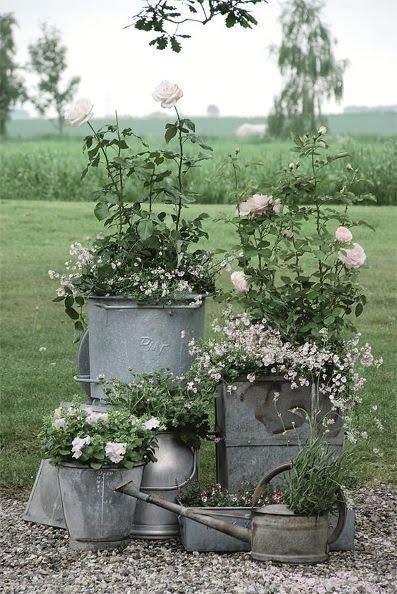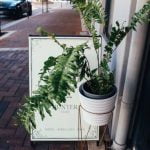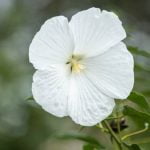Welcome to the world of DIY landscape gardening. If you’re looking to transform your outdoor space with creative and budget-friendly ideas, you’ve come to the right place. In this article, we will explore various ways to design, beautify and maintain your garden with do-it-yourself projects that are sure to enhance your landscape.
Whether you’re a seasoned gardener or just starting out, we have something for everyone who wants to spruce up their outdoor space. Get ready to unleash your creativity and green thumb as we dive into the exciting world of DIY landscape gardening ideas.
First and foremost, successful landscaping starts with proper planning. We’ll guide you through designing your garden layout while considering important factors such as sunlight, soil type, and existing features. With our tips and tricks, you’ll be able to create a well-thought-out landscape that complements your home and suits your needs.
Once the groundwork is laid, it’s time to delve into choosing the right plants for your garden. Our comprehensive guide will help you select flowers, shrubs, and trees that thrive in your climate and suit your aesthetic preferences.
From there, we’ll explore creative hardscaping ideas such as pathways and retaining walls before moving on to implementing water features like ponds or fountains. Lastly, we will also touch on eco-friendly gardening practices and maintenance tips to ensure that your DIY landscape remains vibrant and flourishing year-round.
Planning Your Landscape
When it comes to DIY landscape gardening ideas, the planning stage is crucial for creating a beautiful and functional outdoor space. Here are some tips for designing your garden layout and considering important factors such as sunlight, soil type, and existing features:
- Assess Your Space: Take the time to thoroughly evaluate your outdoor area. Consider the amount of sunlight that each area receives throughout the day, as well as any existing elements such as trees, slopes, or structures that may impact your design.
- Determine Your Soil Type: Understanding the type of soil in your garden is essential for selecting the right plants and ensuring their healthy growth. You can easily test your soil’s pH level and composition using DIY kits available at most garden centers.
- Consider Existing Features: Take into account any existing features in your yard, such as patios, walkways, or natural elements like rock formations. These should be integrated into your landscape design for a cohesive look.
By carefully planning your landscape design and considering these important factors, you can create a cohesive and visually appealing outdoor space that suits both your aesthetic preferences and practical needs.
Whether you’re starting from scratch or looking to refresh an existing garden layout, taking the time to plan and consider these key factors will set you on the path to a successful DIY landscape gardening project that you can enjoy for years to come.
Choosing the Right Plants
When it comes to DIY landscape gardening ideas, choosing the right plants is essential for creating a thriving and beautiful outdoor space. Your climate and soil type are important factors to consider when selecting the best plants for your landscape. By choosing plants that are well-suited to your region, you can ensure a low-maintenance garden that will thrive for years to come.
One of the first steps in choosing the right plants for your landscape is to assess your garden’s sunlight exposure. Different plants have varying light requirements, so it’s important to select species that will thrive in the amount of sunlight your garden receives. For example, if you have a shady area, consider planting shade-loving perennials such as hostas or ferns. If you have a sunny spot, opt for sun-loving flowers like roses or lavender.
In addition to sunlight, consider your soil type when selecting plants for your landscape. Some plants prefer well-draining soil, while others thrive in moist or clay-like conditions. Conducting a simple soil test can help you determine the pH level and composition of your soil, which will guide you in choosing the best plants for your specific growing conditions. By doing so, you can create an environment where your chosen plants will flourish.
| Plants | Light Requirements | Soil Type |
|---|---|---|
| Roses | Full Sun | Well-draining soil |
| Ferns | Shade | Moist soil |
Creative Hardscaping Ideas
DIY Pathways
One of the most effective ways to enhance the beauty and functionality of your landscape is by adding pathways. Whether you prefer a natural, meandering path or a more structured walkway, there are endless DIY options to consider. For a charming and rustic look, consider using materials such as natural stone, gravel, or even reclaimed materials like old bricks or wood boards. You can create patterns with different materials to add visual interest and texture to your pathways.
Retaining Walls
If your garden has varying levels or slopes, retaining walls can be both practical and visually appealing. They help to prevent erosion and provide support for elevated flower beds or seating areas.
There are numerous options for constructing DIY retaining walls, including using interlocking concrete blocks, stacked stones, or even treated timber. It’s important to carefully plan and measure the area before building a retaining wall to ensure that it’s structurally sound and complements the overall design of your landscape.
Other Hardscape Elements
In addition to pathways and retaining walls, there are many other hardscape elements that can add character and functionality to your garden. Consider creating a DIY fire pit for cozy gatherings on cool evenings, building raised garden beds for growing vegetables or flowers, or installing a pergola or trellis for added vertical interest. These projects not only allow you to personalize your landscape but also provide opportunities for relaxation and enjoyment outdoors.
By incorporating these creative hardscaping ideas into your DIY landscape gardening project, you can transform your outdoor space into a beautiful and functional oasis that reflects your personal style and enhances the natural beauty of your surroundings.
Implementing Water Features
Adding water features to your landscape can create a tranquil and visually appealing atmosphere. Whether you want to build a DIY pond, fountain, or water garden, here are some step-by-step instructions to help you enhance your outdoor space:
- Determine the Location: Before getting started, decide where you want to place your water feature. Consider the natural flow of your landscape and ensure that there is access to electricity and water source if needed.
- Plan the Design: Sketch out the design of your water feature, taking into account the size and shape that would best complement your garden. Research different styles and materials to find inspiration for your project.
- Gather Materials: Depending on the type of water feature you choose, gather materials such as a pre-formed pond liner, pump, filter, rocks, and aquatic plants for a natural look.
Once you have all of your materials, start building your water feature according to your plans. For a DIY pond or water garden, dig the area according to the desired depth and shape of the pond. Insert the pond liner carefully, ensuring it fits snugly without any wrinkles or folds.
For a fountain feature, assemble the pump and plumbing according to manufacturer instructions and place into position within your landscaping design. Add decorative rocks or accent pieces around the fountain to elevate its aesthetic appeal.
Whether you opt for a pond or fountain in your landscape gardening project, implementing these lovely water features will add an element of beauty and tranquility while attracting local wildlife like birds and butterflies.
Eco-Friendly Gardening
When it comes to eco-friendly gardening, there are several sustainable landscaping practices that can help reduce your impact on the environment while creating a beautiful and thriving outdoor space. From rain gardens to composting and using native plants to attract wildlife, these techniques are not only beneficial for the planet but can also add an extra layer of charm to your DIY landscape gardening project.
Creating a Rain Garden
One eco-friendly landscaping practice you may want to consider is the creation of a rain garden. These gardens are designed to capture and absorb rainwater runoff from roofs, driveways, and other hard surfaces, reducing the risk of water pollution and erosion. By choosing plants that can tolerate both wet and dry conditions, you can create a stunning garden that also benefits the local ecosystem.
Composting for Healthy Soil
Composting is another key aspect of eco-friendly gardening. By recycling organic waste such as kitchen scraps, yard clippings, and shredded paper, you can create nutrient-rich compost that enriches your soil. This not only reduces the amount of waste sent to landfills but also supports a healthy garden ecosystem without relying on chemical fertilizers.
Using Native Plants to Attract Wildlife
Incorporating native plants into your landscape design is not only beneficial for the environment but also for local wildlife. Native plants provide food and shelter for birds, butterflies, and other important pollinators. Additionally, they require less maintenance than non-native species since they have adapted to their local climate and soil conditions.
By implementing these sustainable landscaping practices in your DIY landscape gardening project, you can create a beautiful outdoor space that supports biodiversity and reduces environmental impact. Whether you’re creating a rain garden, composting for healthy soil, or using native plants to attract wildlife, these eco-friendly techniques will enhance the beauty of your landscape while promoting sustainability.
Maintenance and Care
When it comes to maintaining your DIY landscape gardening, regular care is essential to ensure that your garden stays healthy and thriving. Weeding is an important part of garden maintenance, as it helps prevent invasive plants from taking over and competing for resources with your desired plants. Regularly inspect your garden for weeds and remove them promptly to keep your landscape looking neat and tidy.
In addition to weeding, pruning is another crucial task in maintaining a healthy garden. Pruning helps control the size and shape of your plants, encourages flowering and fruiting, and removes dead or diseased branches. Different types of plants require different pruning techniques, so make sure to research the specific needs of each plant in your landscape.
Seasonal tasks are also an important part of maintaining your garden. This includes activities such as mulching in the spring to retain moisture and suppress weeds, fertilizing in the summer to provide essential nutrients for plant growth, and preparing plants for winter by protecting them from harsh weather conditions. By staying on top of seasonal tasks, you can ensure that your landscape remains healthy throughout the year.
Maintaining a beautiful DIY landscape garden requires dedication and regular care, but the effort is certainly worth it when you see the stunning results. By following these tips for weeding, pruning, and seasonal tasks, you can create a thriving garden that brings joy and beauty to your outdoor space.
Final Touches
In conclusion, DIY landscape gardening offers a world of creativity and budget-friendly options for transforming your outdoor space. By following the tips and ideas provided in this article, you can design and create a beautiful garden that reflects your personal style and enhances your outdoor living experience. From planning your landscape to choosing the right plants, implementing hardscaping elements, adding water features, and incorporating eco-friendly practices, there are numerous ways to create a stunning garden oasis.
One of the final touches to consider when personalizing your landscape is adding decorative elements such as outdoor lighting, seating areas, and unique focal points. Outdoor lighting not only adds ambiance to your garden but also extends the time you can enjoy it into the evening.
Whether it’s string lights, lanterns, or solar-powered fixtures, there are various options to illuminate your outdoor space. Creating comfortable seating areas allows you to relax and entertain in your garden while unique focal points such as sculptures or artistic installations can add character and visual interest.
As you continue with maintenance and care tasks to keep your landscape thriving, don’t forget to regularly assess if there are additional final touches you would like to add to further personalize your space. These finishing touches will truly make your DIY landscape gardening project feel complete and reflect your unique personality and preferences.
In the end, DIY landscape gardening is a fulfilling endeavor that allows you to express yourself creatively while enhancing the beauty of your outdoor space. By incorporating decorative elements like outdoor lighting, seating areas, and unique focal points into your personalized landscape design, you can create an inviting and visually appealing environment that brings joy for years to come.
Frequently Asked Questions
How Do I Landscape My Backyard on a Budget?
Landscaping your backyard on a budget can be achieved by prioritizing tasks and projects, utilizing affordable materials, and doing some of the work yourself. Focus on low-maintenance plants and simple designs to keep costs down.
How Do I Start Landscaping From Scratch?
Starting landscaping from scratch requires careful planning and consideration of factors such as the layout, soil quality, climate, and desired features. Begin by creating a detailed plan and gradually implementing it with the necessary tools and materials.
Is It Hard to Do Landscaping Yourself?
Landscaping yourself can be challenging depending on the scale of the project and your level of expertise. It involves tasks such as digging, planting, hardscaping, and maintenance that require physical effort and time commitment but can be rewarding in the end.

Welcome to my gardening blog! I am passionate about plants and enjoy sharing my knowledge and experiences with others. In this blog, I will write about everything related to gardening, from tips on how to get started to updates on my own garden projects.





